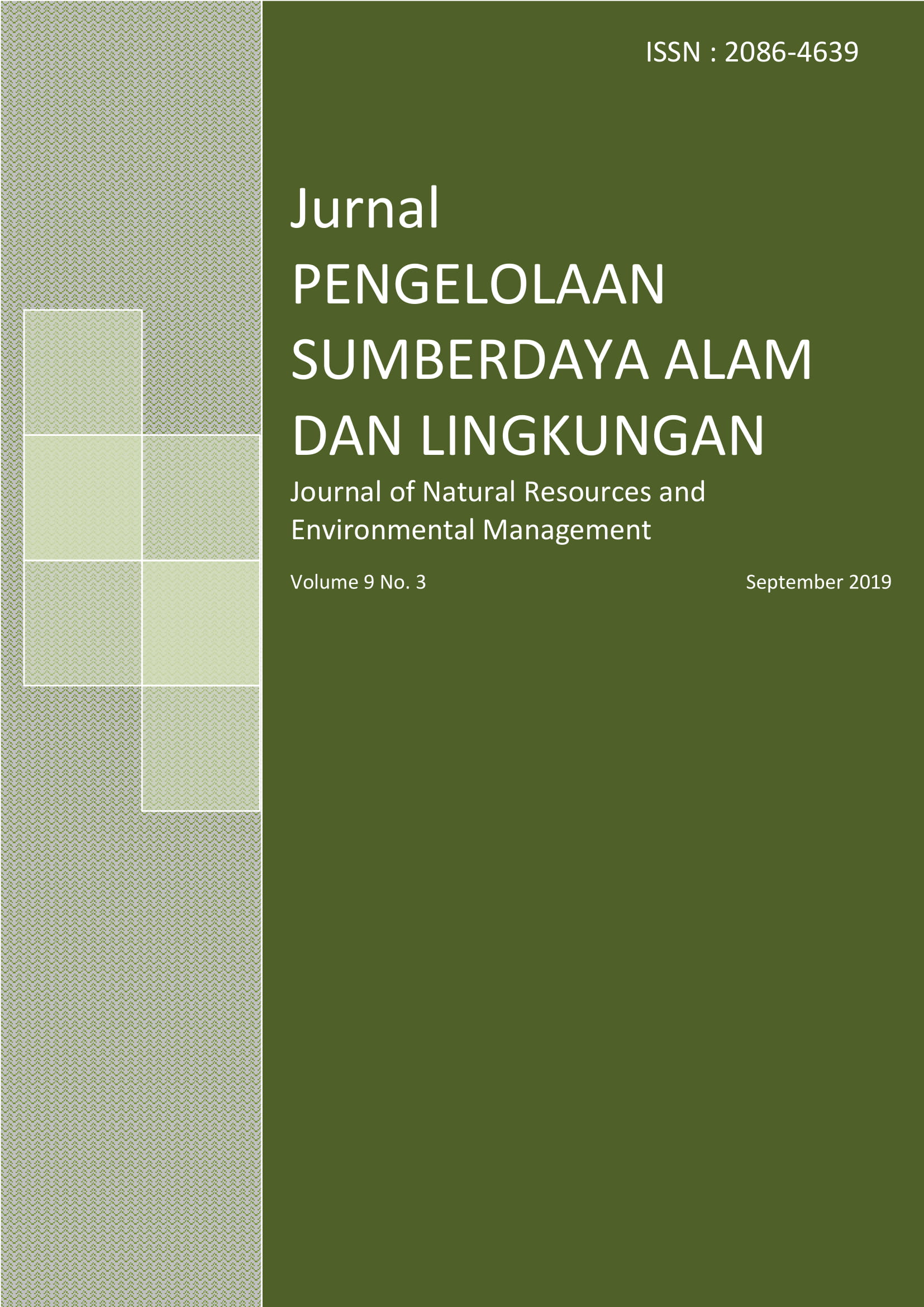Evaluasi Kesintasan dan Pertumbuhan Beberapa Jenis Pohon Lokal di Area Restorasi Cagar Biosfer Cibodas
Abstract
References
Astutik S. 2011. Carbon stock linkage to plant diversity on Mount Gede Pangrango National Park as the core zone of Cibodas Biosphere Reserve. [Internet]. [diunduh 2017 September 11]. Tersedia pada: http://www.unesco.org/new/fileadmin/MULTIMEDIA/HQ/SC/pdf/Final_Report_MAB_YSA_Astutik_Fix.pdf.
Astutik S, Widyatmoko D, Rozak AH. 2013. Laporan Teknis Program Tematik Tahun 2013: Seleksi dan Evaluasi Jenis-jenis Pohon Lokal yang Berpotensi Tinggi dalam Sekuestrasi Karbon pada Tipe Ekosistem Dataran Tinggi Basah. Cianjur: Balai Konservasi Tumbuhan Kebun Raya Cibodas – LIPI.
Elliott S, Navakitbumrung P, Zangkum S, Kuarak C, Kerby J, Blakesley D, Anusarnsunthorn V. 2000. Performance of six native tree species, planted to restore degraded forestland in northern Thailand and their response to fertiliser. Thailand: Restoration for wildlife conservation: International tropical timber organization and the forest restoration research unit, Chiang Mai University.
Gunawan W, Basuni S, Indrawan A, Prasetyo LB, Soedjito H. 2011. Analisis Komposisi dan Struktur Vegetasi Terhadap Upaya Restorasi Kawasan Hutan Taman Nasional Gunung Gede Pangrango. Jurnal Pengelolaan Sumberdaya Alam dan Lingkungan. 1(2): 93-105. doi: dx.doi.org/10.29244/jpsl.1.2.93.
Hairiah K, van Noordwijk M, Suprayogo D. 2008. Interaksi Antara Pohon-Tanah-Tanaman Semusim: Kunci Keberhasilan atau Kegagalan dalam Sistem Agroforestri. [internet]. [diunduh 2017 September 11]. Tersedia pada: http://www.worldagroforestry.org/downloads/WaNuLCAS/LectureNotes/Lecture Note2.pdf.
Hidayah N. 2011. Survivorship and Growth Rate of Rasamala (Altingia excelsa Noronha), Puspa (Schima wallichii (DC.) Korth.) and Jamuju (Dacrycarpus imbricatus (Blume) de Laub.) on Degraded Land in the Upstream of Cisadane Watershed [tesis]. Bogor: Institut Pertanian Bogor.
Kobayashi S. 2004. Landscape rehabilitation of degraded tropical forest ecosystems: case study of the CIFOR/Japan project in Indonesia and Peru. Forest Ecology and Management. 201(1): 13-22. doi: doi.org/10.1016/j.foreco.2004.06.009.
Larasati R. 2012. Peran Cagar Biosfer Cibodas dalam Penyerapan CO2 [skripsi]. Bogor: Institut Pertanian Bogor.
Larasati R, June T, Dewi S. 2012. Peran Cagar Biosfer Cibodas dalam Penyerapan CO2 (The Role of Cibodas Biosphere Reserves in Absorbing CO). Jurnal Penelitian Sosial dan Ekonomi Kehutanan 9(2): 66 – 76.
Marjenah. 2001. Pengaruh Perbedaan Naungan di Persemaian Terhadap Pertumbuhan dan Respon Morfologi Dua Jenis Semai Meranti. Jurnal Ilmiah Kehutanan “Rimba Kalimantan”. 6(2).
Rahman W, Kurniawati F, Iskandar EAP, Hidayat IW, Widyatmoko D, Ariati SR. 2011. Survivorship and growth of eight native tree species during their early stage at a restored land within Gede Pangrango National Park, Indonesia. Dalam: Prosiding Seminar Nasional “Konservasi Tumbuhan Tropika: Kondisi Terkini dan Tantangan ke Depan”. 7 April 2011, pp. 500-505. Cianjur: UPT BKT Kebun Raya Cibodas-LIPI.
Setiadi Y, Adinda A. 2013. Evaluation of Growth in Post-Mining Revegetation Land PT. Vale Indonesia Tbk. Sorowako, South Sulawesi. Jurnal Silvikultur Tropika. 4(1): 19-22.
Sudomo A. 2009. Pengaruh naungan terhadap pertumbuhan dan mutu bibit manglid (Manglieta glauca BL.). Tekno Hutan Tanaman. 2(2): 59-66.
Sunarno B, Rugayah. 1992. Flora Taman Nasional Gunung Gede Pangrango. Bogor: Herbarium Bogoriense Puslitbang Biologi – LIPI.
Wibowo C. 2006. Hubungan antara Keberadaan Saninten (Castanopsis argenta Blume) dengan Beberapa Sifat Tanah: Kasus di Taman Nasional Gunung Gede Pangrango, Jawa Barat [disertasi]. Bogor: Institut Pertanian Bogor.
Widyatmoko D, Astutik S, Sulistyawati E, Rozak AH, Mutaqien Z. 2013. Stok karbon dan biomassa di Cagar Biosfer Cibodas. Dalam: Konservasi Biocarbon, Lanskap dan Kearifan Lokal untuk Masa Depan. Edisi pertama. Cianjur: UPT Balai Konservasi Tumbuhan Kebun Raya Cibodas – LIPI.
Authors
Authors who publish with this journal agree to the following terms:
- Authors retain copyright and grant the journal right of first publication with the work simultaneously licensed under a Creative Commons Attribution License that allows others to share the work with an acknowledgement of the work's authorship and initial publication in this journal.
- Authors are able to enter into separate, additional contractual arrangements for the non-exclusive distribution of the journal's published version of the work (e.g., post it to an institutional repository or publish it in a book), with an acknowledgement of its initial publication in this journal.
- Authors are permitted and encouraged to post their work online (e.g., in institutional repositories or on their website) prior to and during the submission process, as it can lead to productive exchanges, as well as earlier and greater citation of published work (See The Effect of Open Access).






